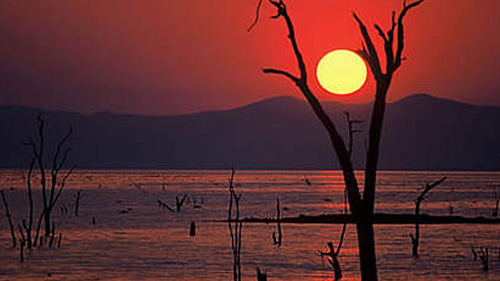WHAT IS CLIMATE CHANGE
Global warming is the greatest threat facing our planet today. A warming planet alters weather patterns, water supplies, seasonal growth for plants and a sustainable way of life for us, and the world’s wildlife. Climate change has already started, but it’s not too late to take action. There’s still time for us all to be part of the solution.

HOW DOES CLIMATE CHANGE OCCUR?
A continuous flow of energy from the sun heats the Earth. Naturally occurring gases in the atmosphere, known as greenhouse gases, trap this heat like a blanket, keeping the Earth at an average of 15 degrees Celsius – warm enough to sustain life. Carbon dioxide (CO2) is the most significant of these gases. The amount of naturally produced CO2 is almost perfectly balanced by the amount naturally removed through photosynthesis and its dissolution in oceans. However, the overuse of fossil fuels is leading to increased CO2 in the atmosphere, trapping more and more heat and warming the Earth.
As a result, we’re seeing more dramatic weather patterns across the globe. The effects of Earth’s changing weather not only causes devastating natural disasters but shrinking of the world’s ice shelves and glaciers due to warming sea water. Because ice acts as a solar reflector, the less ice there is, the less heat the Earth reflects. WWF provides more detail on the impacts of climate change on our polar regions, glaciers and more.
WHY IS CLIMATE CHANGE HAPPENING?

There’s more than a 90% probability that human activities over the last 250 years have warmed the planet. That’s according to the 2007 Assessment Report by the United Nations’ Intergovernmental Panel on Climate Change – an organisation made up of thousands of independent scientists worldwide.
Forests absorb and remove CO2 from the atmosphere. So areas undergoing excessive deforestation experience higher carbon emissions. Agriculture is the second largest greenhouse gas emitter after fossil fuels. Methane produced by livestock, manure management, the burning of savannah, and the conversion of forests to pasture land are all major sources of greenhouse gas emissions. WWF details the environmental impacts of agriculture on climate change, water supplies, habitat loss and more.
Lester Brown, a US environmental analyst and president and founder of the Earth Policy Institute, has been studying the effects of unsustainable development and resource use for decades. This adapted documentary narrated by Matt Damon from Brown’s book Plan B 3.0 gives an in depth look at the imminent crisis caused by climate change and the effects it will have on the environment, wildlife, our cities, resources and economy.
HOW CAN WE BE MORE SUSTAINABLE?

WWF’s Energy Report provides a realistic scenario of what the world could be like in 2050, running wholly on renewable energy.Although the journey to a sustainable future may seem difficult to imagine, it is far from impossible. We can all do our part individually and together.We can celebrate our planet one day a year for Earth Hour – and go Beyond the Hour towards a sustainable future.
IT’S A FACT
Did you know? A bicycle is a marvel of engineering efficiency, one where an investment in 22 pounds of metal and rubber boosts the efficiency of an individual mobility by a factor of three (Lester Brown, EPI)Did you know? It takes 200 litres of water to produce one latte.Did you know? 78% of agricultural land is used for livestock production.
